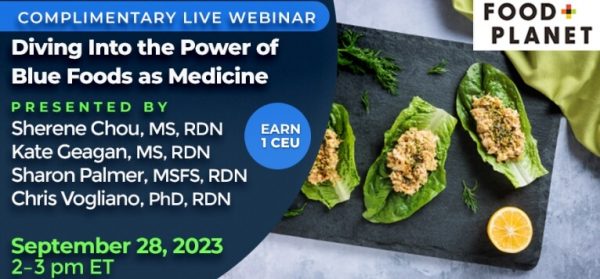Until recently, I thought Blue Foods was a term referring to food items that have a blue color. Blue food is not very common in nature, as most plants and animals do not produce blue pigments. Some exceptions are blueberries, blue corn, blue potatoes, and blue cheese.
Research indicates blue food (especially blueberry) can help lower blood pressure, improve mood, and prevent oxidative stress. This is because blue food contains anthocyanins, which are antioxidants that give the food its color. Anthocyanins can also protect the brain from aging and inflammation.
An article in ‘Today’s Dietician’ mentioned a webinar about ‘Diving into the Power of Blue Foods as Medicine’ triggered curiosity about another meaning of Blue Foods. Blue food also refers to food produced from the ocean and freshwater sources, such as fish, shellfish, seaweed, and algae.
Blue food provides protein and essential nutrients to billions of people around the world, especially in coastal, rural, and indigenous communities. Blue food also supports the livelihoods of people who work in small-scale fisheries and aquaculture. However, blue food is not yet prominent in food discussions and policies of the global food system.
It faces many challenges such as overfishing, pollution, climate change, and biodiversity loss, and a need to promote sustainable blue food production and consumption. In our next blog, we will dive deep into the world of bivalves, the tasty shell food.

Read more about Blue Foods here: What’s the Difference Between Clams, Mussels and Oysters? – Ocean Conservancy and here: Why
